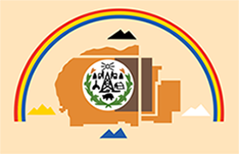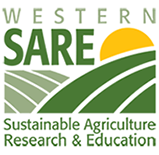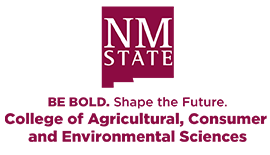Selected Plants of Navajo Rangelands
About the project
This mobile-accessible web database can help agricultural professionals, ranchers, and others on the Navajo Nation identify typical range plants, to help maximize rangeland ecology, productivity, and sustainability.
Plants are identified by Navajo name (written and spoken) and are searchable by plant type, common name, scientific name, flower color, habitat, growing season, or special concerns.
A downloadable version of the same information is under development, which will enable offline use in the form of a printable or viewable PDF.
Navajo rangeland managers, coordinated by Gerald Moore, Coordinating Extension Agent of Navajo Tri-State Federally Recognized Tribal Extension Program, were involved in project development, and provided feedback on prototypes development in conjunction with NMSU scientists and the development team. Navajo agency professionals (including from Diné College, BIA, NRCS, Navajo Department of Agriculture, and Navajo Soil and Water Conservation District), have been involved throughout the process to ensure information is effective for target audiences.
Multimedia technology was produced by New Mexico State University Innovative Media Research and Extension.
You can help document Navajo rangelands for future generations. Send photos of plants or rangeland sites labeled with date, location, photographer's name, and your comments to:
- Kristy Kinlicheenie, Extension Program Coordinator, 4-H Youth Development, Navajo Nation - Window Rock
Email: kristyldennison@email.arizona.edu
Phone: 928-206-0763 - Nathan Notah, Extension Assistant Agent, Navajo Nation - Window Rock
Email: 44notah@email.arizona.edu
Phone: 505-870-0827 - Grey Farrell, U of Az Extension, Tuba City, AZ
Email: GFarrell@cals.arizona.edu - Treva Henio, BIA-Natural Resource, Crownpoint, NM
Email: tjhenio@gmail.com
Acknowledgments
Support for this project was provided by the Western Sustainable Agriculture Research and Education (WSARE) program through the National Institute of Food and Agriculture (NIFA), United States Department of Agriculture (USDA). Project Director was Gerald "Jerry" Hawkes of New Mexico State University Department of Extension Animal Sciences and Natural Resources. Gerald Moore, Coordinating Extension Agent of Navajo Tri-State Federally Recognized Tribal Extension Program, had the initial vision for this project and led it in every stage.
Our deepest thanks go out to individuals and organizations who provided images, descriptions, plant identification, user testing, consultation, and support. These include:
- Patrick Alexander (BLM, Las Cruces District Office)
- Chris Allison (Professor emeritus, NMSU)
- Nick Ashcroft (Dept. Extension Animal Sciences and Natural Resources, NMSU)
- Varian Begay (Elementary Educator, Dilkon Community School)
- Renée Benally (Dept. Rangeland, BIA)
- Wilfred Big (Senior Extension Agent, Navajo Nation Department of Agriculture)
- Arnold Clifford (Navajo Botanist)
- Casey Francisco (Dept. Rangeland Management, BIA)
- Cuyler Frank (Communications Specialist, Navajo Technical University)
- Ken Gishi (USDA-NRCS Arizona)
- Lorene B. Legah (Retired Faculty, Center for Diné Studies- Diné College)
- Andrea Long (Navajo Soil and Water Conservation District)
- Rus Kleinman (Western New Mexico State University) and his online tool, Vascular Plants of the Gila Wilderness
- Felix Nez, Jr. (USDA-NRCS)
- Felix Nez (Diné College)
- Tennell Nez (Office Specialist, Navajo Nation Department of Agriculture)
- Carole Palmer (NWF Tribal Partnership Outreach)
- Lillis Urban (BLM‐Taos Field Office)
- Utah State Extension and its online tool, Range Plants of Utah
- Judy Willeto (Navajo Dept. of Agriculture)
- Lawrence Yazzie (BIA)



Copyright 2018 New Mexico State University. Partially funded by the Western Sustainable Agriculture Research and Education Program (westernsare.org; 435.797.2257), project EW15-023. Programs and projects supported by Western SARE are equally open to all people. NMSU is an equal opportunity/affirmative action educator and employer.
©2018 NMSU Board of Regents.
Individual photographers retain all rights to their images.
Partially funded by the
Western Sustainable
Agriculture Research and Education Program
(westernsare.org; 435.797.2257),
project EW15-023.
Programs and projects supported by Western SARE are
equally open to all people.